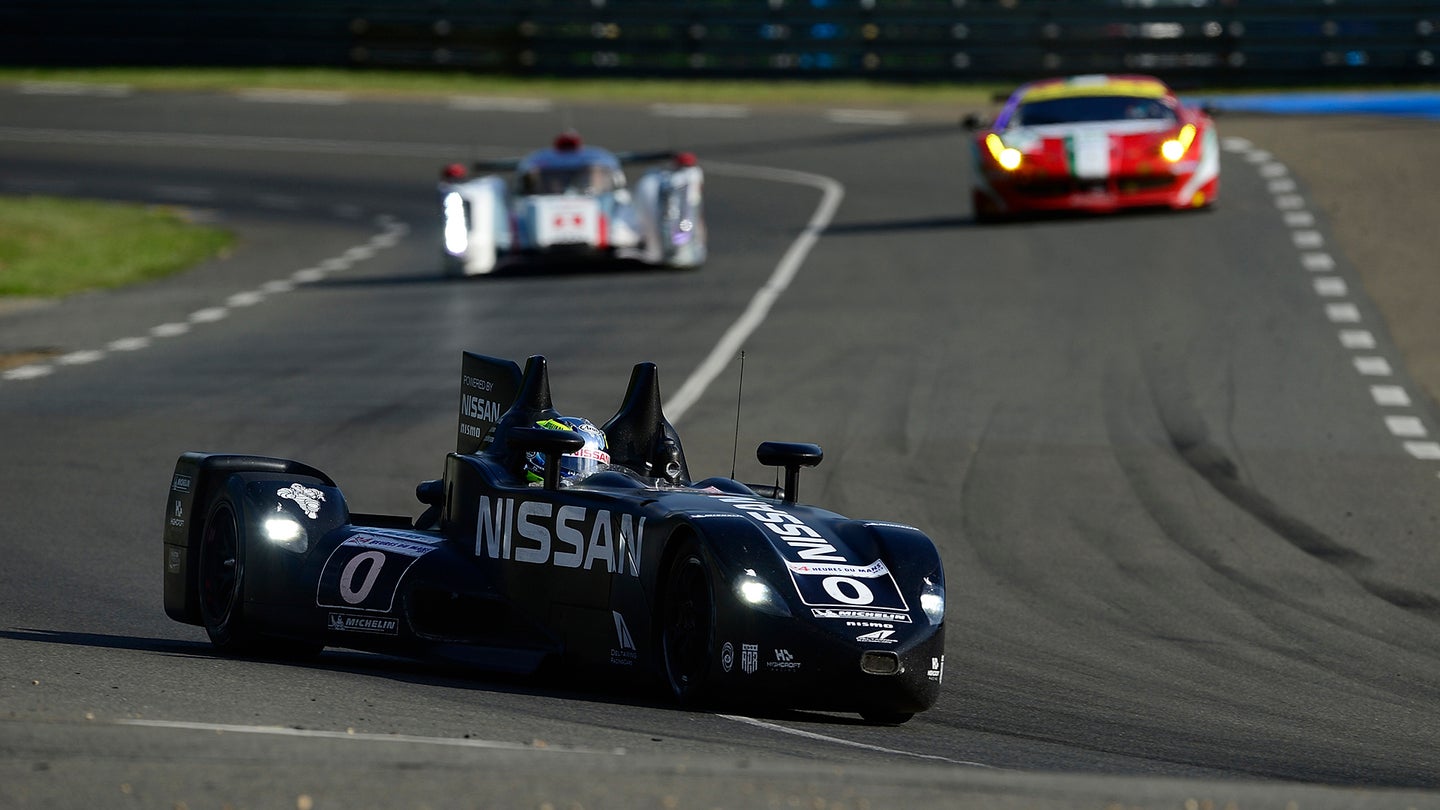Le Mans Is All About Watching This Driver Try to Repair the DeltaWing
The embodiment of Le Mans.

In 2012, a weird little race car made its debut at the 24 Hours of Le Mans. The DeltaWing was running as the "Garage 56" entry—this final spot on the grid is reserved for experimental cars that are running a new technology. The DeltaWing was most certainly that. It's small, lightweight, unique design looked like nothing else on the track. This rolling laboratory was testing design concepts that might become the future of racing.
The DeltaWing wasn't racing at Le Mans to win, it was racing to prove that it could. A little more than six hours into the race, it got clipped by a Toyota LMP1 car on a restart. The driver of the Toyota probably didn't realize that the DeltaWing was right there as he tried to pass another car. The DeltaWing got knocked off track and into one of the few concrete walls at Le Mans.

The DeltaWing took heavy damage, but the engine still worked. If the car could get back to the pits, it could be tended to by the crew. The pit entrance is just up the road from where the crash happened.
But Le Mans has its own rules. The car must make it back to the pits under its own power. The driver can work on the car, but they must stay within a certain distance of the car, maybe 10 or 15 feet if they exit the cockpit. If they wander too far, the car is considered retired.
Once the DeltaWing was pushed safely behind a break in the wall, something amazing happened. The driver, Satoshi Motoyama, got to work on the car. Some of the mechanics came over to an area next to where the car was. Separated by a chainlink fence, the crew tried to talk their driver through some repairs to get the car moving again.
Complicating matters was that Motoyama spoke Japanese and the mechanics did not. The crew would explain something and another team member would then translate it for Motoyama. The crew was also able to pass a few small tools through the fence for him to use. Given the complexity of modern race cars, a couple of wrenches isn't going to get much done.
After two hours of working on the car, Motoyama and the crew came to the heartbreaking realization that their day was over. Motoyama was crying while the crew tried to embrace him through the holes in the chain link.

Their two hours of work ending utter devastation sums up everything that you need to know about racing at the 24 Hours of Le Mans. It's not just cars driving around for a day. It's bigger than any one person. There are countless hours of work that go into just getting a team ready for the race. But once that clock starts counting backward from 24:00:00, it becomes so much more. That emotion, that passion, is why we watch it.
This last video is a slightly longer edit of Motoyama working on the DeltaWing. It's worth watching to get an understanding of what he and the team were going through for those two hours.

